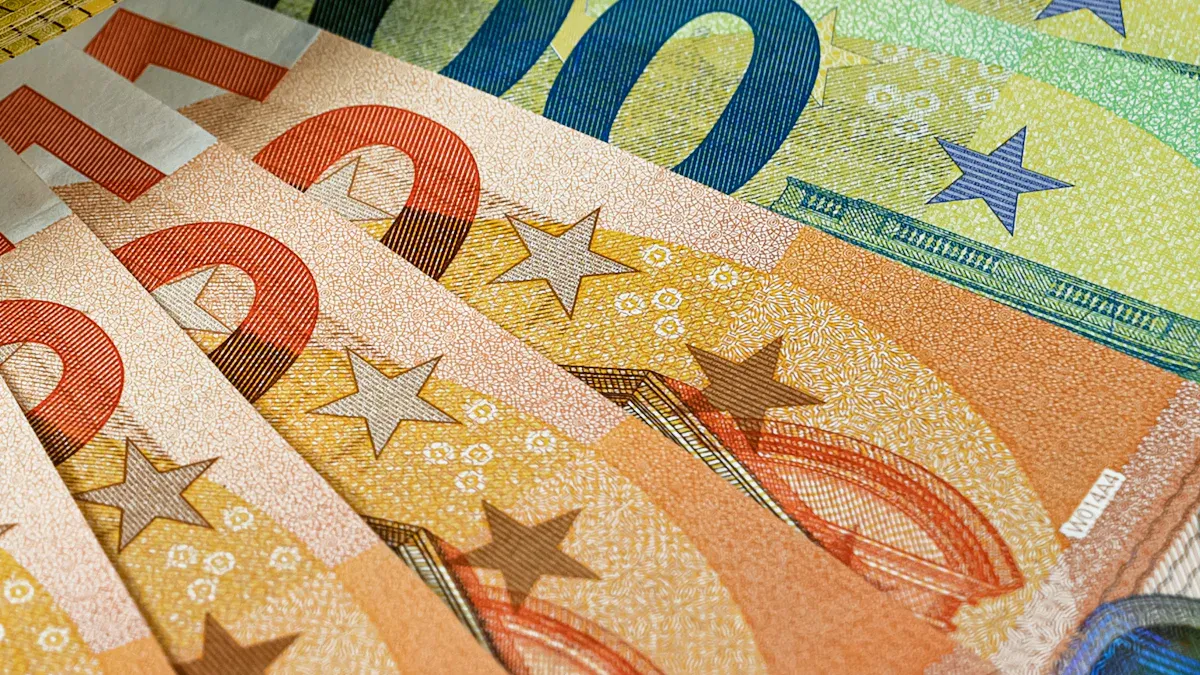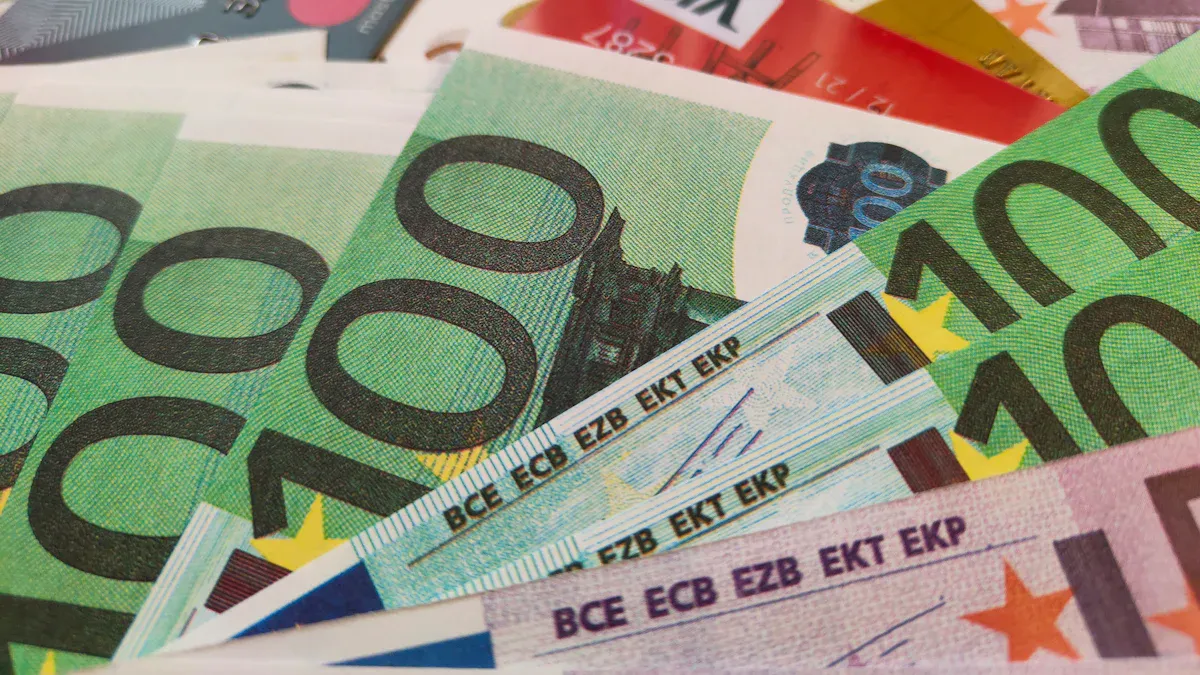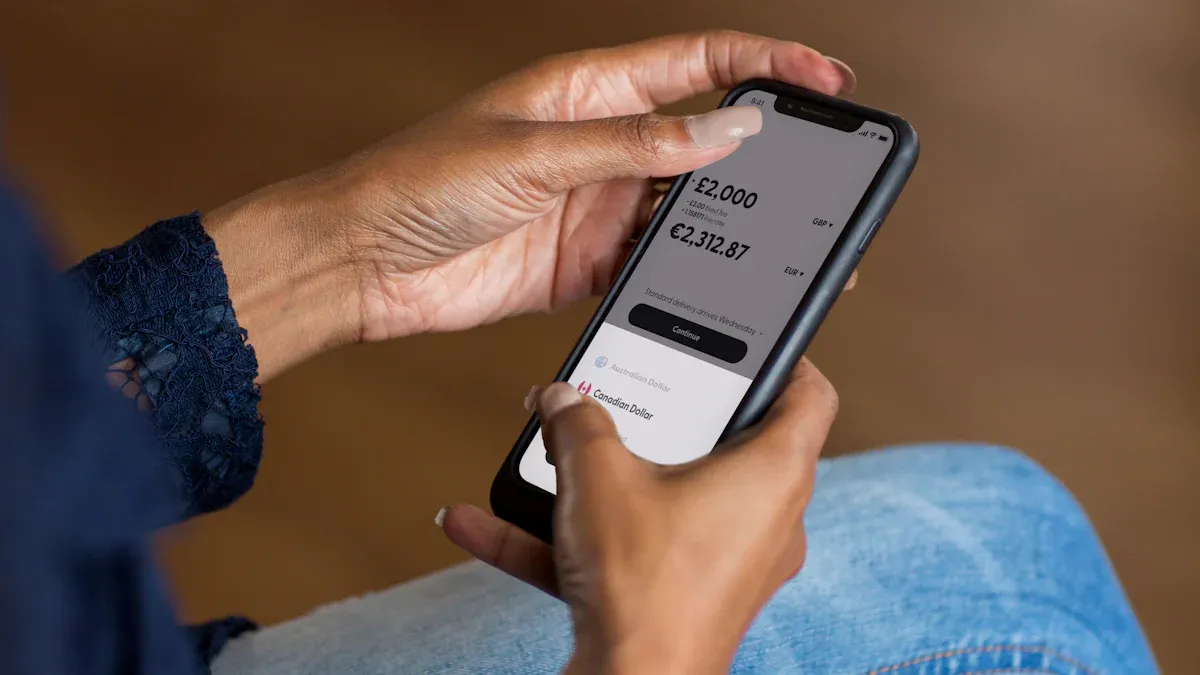- EasyCard
- Trade
- Help
- Announcement
- Academy
- SWIFT Code
- Iban Number
- Referral
- Customer Service
- Blog
- Creator
Sending Money to the Netherlands: Understanding the Most Convenient Remittance Methods and Fees

Image Source: pexels
Do you want to know what options are available when sending money to the Netherlands? You may be concerned about how much the fees are for each channel and want to understand how to choose the most suitable remittance tool for yourself. Different methods can vary significantly in terms of operation and costs. By comparing various channels, you can find a solution that is both convenient and cost-effective.
Key Points
- When choosing a remittance method, consider bank transfers, third-party platforms, and remittance companies. Each method has different fees and speeds.
- Bank transfers are suitable for large amounts, with fees typically between $15-50 and processing times of 3-7 business days.
- Third-party platforms like Wise and Remitly offer convenient remittance services with lower fees, ideal for small and frequent transfers.
- Remittance companies like Western Union are suitable for urgent transfers, typically arriving within minutes, with fees between $5-20.
- When selecting a remittance channel, compare fees, exchange rates, and platform promotions to ensure the most suitable option.
Methods and Fees for Sending Money to the Netherlands

Image Source: unsplash
When choosing a channel to send money to the Netherlands, you typically encounter three mainstream methods: bank transfers, third-party platforms, and professional remittance companies. Each method has different processes, fees, and applicable scenarios. You can select the most suitable channel based on your needs.
Bank Transfers
Bank transfers are a traditional choice for many. You can process international transfers through licensed Hong Kong banks, sending funds directly to the recipient’s bank account in the Netherlands. This method is suitable for large or regular payments, offering high security and is ideal for individuals and businesses with bank accounts. You can operate at a bank counter or via online banking, with a standardized process.
Bank transfer processing times are typically three to seven business days. If you need urgent transfers, banks may not be the fastest option.
The fee structure for bank transfers is relatively complex. You may need to pay transfer fees, intermediary fees, tracking fees, receiving fees, and processing fees. Most banks charge a base fee, making the actual cost higher. It’s best to consult bank staff in advance to understand all potential fees.
- Bank transfer fees generally range from $15-50, depending on the transfer amount and bank policies.
- You should also note exchange rate losses, as some banks add a percentage fee to the exchange rate.
| Method | Process Description | Accessibility Description |
|---|---|---|
| Bank Deposit | Funds are deposited directly into the recipient’s bank account, suitable for regular payments or large transfers. | Suitable for individuals and businesses with bank accounts. |
Third-Party Platforms
Third-party platforms offer a more convenient and cost-effective option for sending money to the Netherlands. You can operate online through platforms like Wise, Remitly, or Panda Remit, with a simple process and fast speeds. You only need to register an account, enter recipient information, select the transfer amount and currency, and the platform will automatically calculate fees and exchange rates.
These platforms typically use mid-market exchange rates with transparent fees, making them suitable for small or frequent transfers. You can complete operations anytime, anywhere via mobile or computer, without needing to visit a bank.
| Platform | First Transfer Fee | Subsequent Transfer Fees |
|---|---|---|
| Panda Remit | $0 | $1.99/2.99/5.99 |
| Platform | Transfer Fee | Exchange Rate Fee |
|---|---|---|
| Wise | From 0.43% | Zero-profit policy, uses mid-market exchange rate |
| Remitly | Varies by amount and speed | Markup of 0.5% to 3.0% |
When using third-party platforms, you can enjoy various promotions. For example, Remitly offers a first transfer discount for new customers, with all transfer fees at $1.49. For transfers exceeding $1,000, platforms may apply non-promotional foreign exchange rates. You can check the latest promotions on the platform’s event page.
- Third-party platform fees are typically between $1-10, with some platforms offering free first transfers or discounts.
- Exchange rate fees are low, suitable for cost-conscious users.
Remittance Companies
Professional remittance companies (e.g., Western Union, MoneyGram) provide diverse services for sending money to the Netherlands. You can choose cash pickup, bank account deposits, or mobile wallet receipts. Remittance companies have extensive networks, ideal for recipients without bank accounts, especially in urgent situations.
| Type | Advantages | Disadvantages |
|---|---|---|
| Credit Unions and Bank Transfers | Secure, convenient, using the SWIFT system for international transfers. | Typically charge a base fee, may require branch visits during business days. |
| Traditional Remittance Services (e.g., Western Union) | Extensive network, fast transfers, suitable for emergencies. | Inconsistent fees, cash pickup only available during business hours, exchange rate fees apply. |
| Online Transfer Providers (e.g., Wise) | Low fees, fast transfers, user-friendly online and mobile apps. | Limited to certain countries, recipients need bank accounts, possible minimum transfer limits. |
When using remittance companies, you can typically complete transfers within minutes, and recipients can pick up cash at local partner locations. Fees vary by amount and receipt method, usually between $5-20. Some companies also support mobile wallet receipts, suitable for digital users and small transfers.
| Method | Process Description | Accessibility Description |
|---|---|---|
| Cash Pickup | Recipients can personally collect funds at local partner locations, typically completed within minutes. | Suitable for recipients without bank accounts, convenient for urgent transfers. |
| Mobile Wallet | Funds are instantly delivered to a mobile wallet linked to the recipient’s phone number, enabling quick access and flexible use. | Suitable for digital users and small transfers, especially popular in emerging markets. |
When choosing a method to send money to the Netherlands, you can select flexibly based on the amount, speed requirements, and recipient’s situation. Bank transfers are suitable for large and business payments, third-party platforms are ideal for small and frequent operations, and remittance companies are best for cash receipts and urgent transfers. By combining fees, exchange rates, and platform promotions, you can find the most suitable remittance channel.
Process and Receipt Methods for Sending Money to the Netherlands

Image Source: unsplash
Operation Process
When sending money to the Netherlands, you can choose different operation methods. Each method has slightly different steps but is easy to master. Below are the basic processes for three common channels:
- Bank Transfers
You can log into your bank’s mobile app and select the international transfer or wire transfer function. Enter the recipient’s name, bank name, address, account number (or IBAN), and SWIFT/BIC code. Confirm the transfer amount and currency, and pay the international transfer fee (usually $40-50). If you need to handle it in person, bring the necessary information to a bank counter, and staff will assist you. - Third-Party Platforms
You can register an account with third-party platforms like Wise or PayPal. After logging in, select “send money to the Netherlands,” enter recipient information and amount. The platform will display fees and exchange rates automatically. You only need to confirm the information and make the payment, typically completing the transfer within 24 hours. - Remittance Companies
You can visit offline locations of Western Union, MoneyGram, etc. or register an account on their websites. Enter the recipient’s name, address, and receipt method (e.g., cash pickup or bank account). After paying the fee, the system will generate a pickup code, which the recipient can use to collect cash or check the receipt in the Netherlands.
Tip: Before starting, prepare all recipient information in advance to avoid delays due to incomplete details.
Receipt Methods
When choosing a receipt method, you have multiple options to meet different needs. Common receipt methods include:
- Bank Account Deposit: You can transfer funds directly to the recipient’s Dutch bank account, such as ABN AMRO or ING. It’s fast and suitable for recipients with bank accounts.
- Cash Pickup: Recipients can collect cash at partner locations in the Netherlands (e.g., Ria, Western Union) with a pickup code. Suitable for those without bank accounts or needing urgent funds.
- Mobile Wallet Deposit: Some platforms support transferring funds directly to the recipient’s mobile wallet, convenient for immediate use.
- Debit Card Deposit: Some third-party platforms support depositing funds directly into the recipient’s debit card account, offering flexible operations.
| Receipt Method | Description |
|---|---|
| Bank Account | Funds are deposited directly into mainstream Dutch bank accounts, fast and suitable for most users. |
| Cash Pickup | Cash can be collected at designated locations, ideal for those without bank accounts or urgent situations. |
| Mobile Wallet | Funds go directly to the recipient’s mobile wallet, convenient for spending and transfers. |
| Debit Card Deposit | Funds are deposited directly into the recipient’s debit card, supported by some platforms, easy to operate. |
You can flexibly choose the most suitable receipt method based on the recipient’s situation and needs. When sending money to the Netherlands, it’s advisable to communicate with the recipient in advance to ensure the chosen method is secure, convenient, and cost-effective.
Pros, Cons, and Security Analysis
Speed and Convenience
When choosing a method to send money to the Netherlands, speed and convenience are key considerations. Different channels have distinct arrival times:
- Traditional bank transfers typically take 1-3 business days, suitable for non-urgent scenarios.
- Modern digital remittance platforms (e.g., Wise, Remitly) can achieve instant transfers, and some remittance companies use SEPA instant credit transfers, delivering funds to the recipient’s account within minutes, even on weekends or holidays.
- If you choose cash pickup, some remittance companies can also provide fast arrivals, ideal for urgent needs.
You can also compare the convenience and user experience of each platform:
| Service | Convenience | User Experience |
|---|---|---|
| Remitly | Multiple delivery options, including bank accounts, mobile wallets, or cash pickup | Fast, cost-effective, and secure transfer process |
| Wise | Multi-currency accounts, simplifying international transactions | Transparent fees, fast transfer speeds |
Remitly supports over 100 currencies, and Wise allows you to hold and convert over 50 currencies, greatly enhancing the flexibility of international remittances.
Fee Comparison
When sending money, in addition to visible fees, you should pay attention to exchange rate differences and hidden costs. The fee structures of different providers are as follows:
| Service Provider | Fee Structure Description | Exchange Rate Situation |
|---|---|---|
| Western Union | Fixed fees based on destination and amount, higher fees for credit card transfers. | Fees vary by payment method. |
| PayPal | Fees based on amount and recipient country, may include a percentage of the amount. | Additional fees may apply. |
| Wise | Transparent fees, no hidden costs, uses real market exchange rates, typically lower fees. | Competitive exchange rates, saving on conversion costs. |
You should also pay attention to exchange rate differences:
| Provider | Exchange Rate Difference Range |
|---|---|
| Dutch Banks | 0.78% - 1.40% |
| Wise | 2.35% - 3.34% |
Although Wise’s exchange rate difference is slightly higher than some banks, its overall fees are more transparent, making it suitable for users seeking low costs and high efficiency.
Security and Compliance
When sending money to the Netherlands, security and compliance are equally important. Mainstream platforms and banks adopt strict measures to ensure fund safety:
- You must send money through authorized and regulated channels to ensure funds are legal and compliant.
- When transferring, you need to submit invoices, contracts, or other transaction proofs to prevent money laundering and fraud.
- The recipient’s bank information must be accurate and consistent with their business registration details.
You can reduce risks by:
- Choosing providers regulated by authorities like the FCA, ensuring transparent pricing.
- Comparing exchange rates and fees across multiple platforms to avoid unreasonable charges.
- Inquiring about all possible additional fees before the transaction.
Tip: When choosing a channel, verify the platform’s credentials and prioritize well-known, highly compliant providers to ensure fund safety.
Recommendations for Sending Money to the Netherlands
User Scenario Recommendations
When choosing a channel to send money to the Netherlands, you can select flexibly based on different needs. The table below helps you quickly compare recommended methods for common scenarios:
| User Scenario | Recommended Channel | Fees (USD) | Speed | Exchange Rate Transparency | Applicable Receipt Methods |
|---|---|---|---|---|---|
| Large One-Time Transfer | Traditional Bank | 25-50 | 2-5 business days | Hidden markup | Bank account |
| Small or Frequent Transfers | Wise, Panda Remit | 1-10 (first transfer free) | 2 minutes-1 business day | Real-time market rate | Bank account, wallet |
| Tuition, Family Support | Panda Remit | First free, subsequent low | As fast as 2 minutes | Fully transparent | Bank account, mainstream wallets |
| Business Payments | Dutch Banks | 25-40 | 2-5 business days | Hidden markup | Bank account only |
If you need a one-time large transfer, choose Chinese mainland or Dutch banks for high security, though fees are higher. For frequent small transfers, Wise and Panda Remit are more suitable, with low fees and fast arrivals. For tuition or family support, Panda Remit offers free first transfers and multiple receipt methods. For business users, choose Dutch local banks to ensure compliance and fund safety.
Tip: For regular transfers, monitor exchange rate changes and operate when rates are favorable to save more funds.
Platform Promotion Tips
When choosing a remittance platform, you can take advantage of various promotions to reduce costs. Many platforms offer free first transfers or fee reductions for new users. Some providers launch limited-time promotions during holidays, reducing exchange rate differences. If you’re a frequent remittance user, you can join platform loyalty programs for cashback or fee discounts.
- Many remittance services offer fee waivers and cashback rewards.
- Panda Remit offers free first transfers, with subsequent fees as low as half of banks’.
- Wise has transparent fees with no hidden markups, ideal for cost-conscious users.
- During holidays, some platforms offer limited-time fee reduction events.
You can check the latest promotion information on the platform’s website or app, plan your transfer timing wisely, and enjoy more benefits. When choosing a channel, prioritize regulated, transparent platforms to ensure fund safety and transfer speed.
When choosing a remittance method to the Netherlands, you can first compare the pros and cons of different channels:
| Remittance Method | Advantages | Disadvantages |
|---|---|---|
| Traditional Remittance | High reliability, suitable for large transactions, lower fees. | Long processing times, requires business day operations. |
| Instant Remittance | Fast, available 24/7, good experience, real-time confirmation. | Need to guard against errors and fraud, may be pricier. |
You can focus on the following factors to quickly select the right channel:
- Compare exchange rates and fees, choose transparent and low-cost platforms.
- Decide based on transfer speed and receipt method, considering urgency.
- Choose providers with wide coverage and good customer support.
- Lock in exchange rates in advance to avoid fluctuation risks.
You should also prioritize safety and compliance, choosing regulated financial institutions. In recent years, competition among digital banks and fintech companies has intensified, leading to lower fees and more transparent services. You can compare multiple options and choose flexibly to ensure fund safety and transfer efficiency.
FAQ
What basic information is needed to send money to the Netherlands?
You need to provide the recipient’s name, bank account number (IBAN), bank name, and SWIFT/BIC code. Some platforms also require the recipient’s address. Prepare this information in advance.
How long does it take for a transfer to arrive in the Netherlands?
Bank transfers typically take 2-5 business days. Third-party platforms and remittance companies can deliver in as little as a few minutes. Choose the appropriate channel based on urgency.
Are there limits on transfer amounts?
Most platforms have caps on single and daily transfer amounts. You can check specific limits on the platform’s website. Banks generally support large transfers but require relevant documentation.
How are fees and exchange rates calculated for transfers?
You can view fees and real-time exchange rates on the platform’s page before transferring. Some platforms charge fixed fees, others charge a percentage of the amount. Review fee details carefully.
What should I do if a transfer fails?
You can contact the remittance platform or bank’s customer service, providing the order number and relevant information. The platform will assist in investigating the issue and processing a refund or resending the transfer.
Delving into convenient remittance options to the Netherlands reveals bank transfers’ high costs ($15-50) and 3-7 day waits, while platforms like Wise or Remitly deliver speed (minutes to 24 hours) but with rate markups (0.5%-3%) and intermediary fees that can inflate expenses, especially for mainland China users with ongoing cross-border flows. BiyaPay counters with a comprehensive low-cost fix: fees from 0.5%, same-day delivery across most global regions, including the Netherlands, for streamlined, transparent fund shifts without IBAN checks or surprise charges.
BiyaPay’s key edge is its multi-asset swapping: instant fiat-to-crypto conversions, zero-fee contract placements, and real-time rate tools to snag prime exchanges, sidestepping legacy providers’ volatility hits. A mere minutes-long signup unlocks trading US and Hong Kong stocks on one platform minus offshore hassles, converting remittances into investment plays for superior gains. Unlike Panda Remit’s first-free but later fees ($1.99-5.99), BiyaPay’s steady low rates excel for repeated transfers.
Launch today—register at BiyaPay for a hassle-free Netherlands remittance path. Tap the Real-Time Exchange Rate Query to track euro trends and amplify value. Uncover Stocks to weave transfers with trades, sparking wealth cycles. With BiyaPay, cross-border remittances evolve from chores to smart strategies!
*This article is provided for general information purposes and does not constitute legal, tax or other professional advice from BiyaPay or its subsidiaries and its affiliates, and it is not intended as a substitute for obtaining advice from a financial advisor or any other professional.
We make no representations, warranties or warranties, express or implied, as to the accuracy, completeness or timeliness of the contents of this publication.




Contact Us
Company and Team
BiyaPay Products
Customer Services
is a broker-dealer registered with the U.S. Securities and Exchange Commission (SEC) (No.: 802-127417), member of the Financial Industry Regulatory Authority (FINRA) (CRD: 325027), member of the Securities Investor Protection Corporation (SIPC), and regulated by FINRA and SEC.
registered with the US Financial Crimes Enforcement Network (FinCEN), as a Money Services Business (MSB), registration number: 31000218637349, and regulated by FinCEN.
registered as Financial Service Provider (FSP number: FSP1007221) in New Zealand, and is a member of the Financial Dispute Resolution Scheme, a New Zealand independent dispute resolution service provider.



















